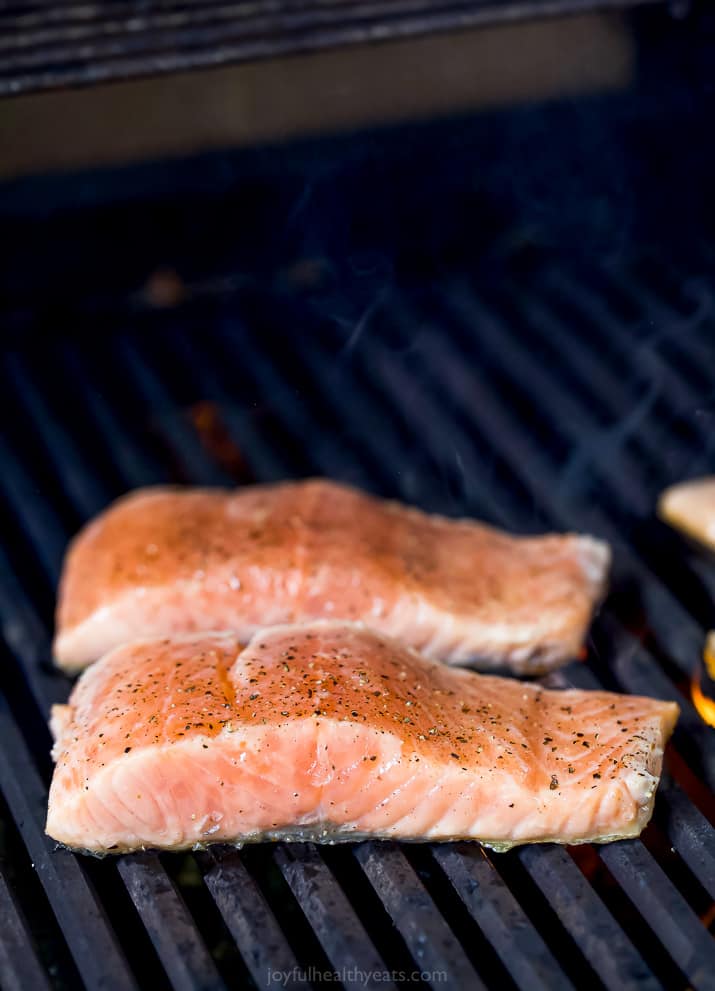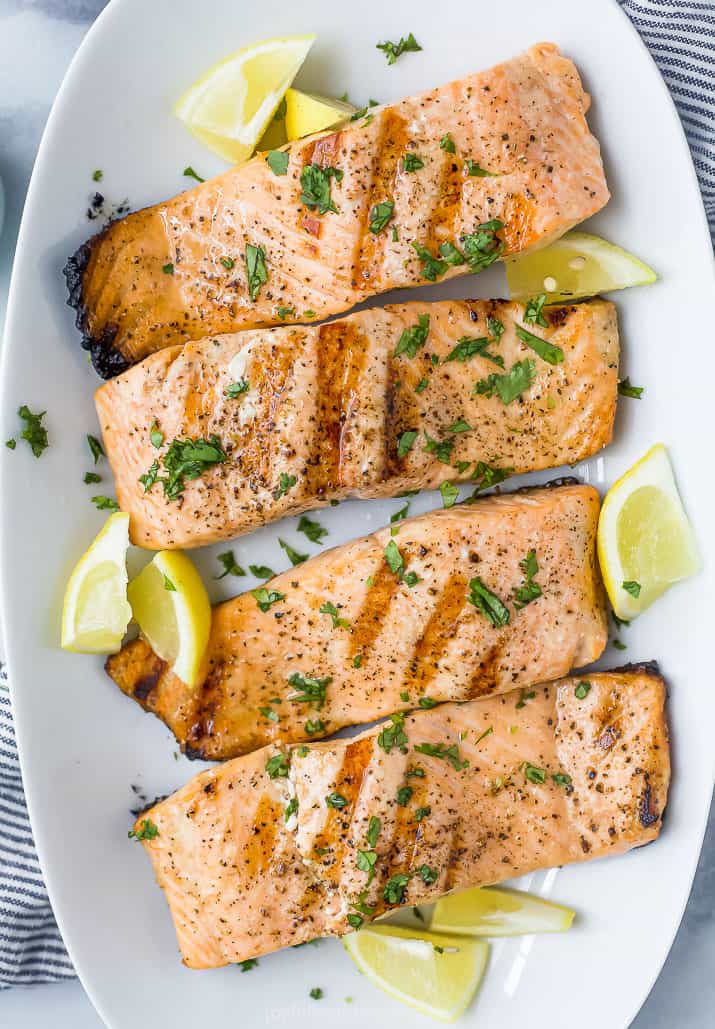Salmon is one of the most popular and nutritious fish to grill during the summer months. It’s full of healthy omega-3 fatty acids and proteins. However, its delicate flesh can easily stick and break apart on the grill grates if you don’t take the proper precautions. With a few simple preparation steps and grilling techniques, you can enjoy perfectly grilled salmon with lovely grill marks without any sticking or tearing.
Why Salmon Sticks
Salmon contains high levels of oil and moisture. When placed directly onto hot grill grates, the fish’s surface immediately sears and forms a bond with the metal bars. If you try to flip or remove the fillet too soon, portions of the flesh will stick and remain behind on the grill. The end result is patchy salmon that loses its shape and falls apart Sticking also creates problems when attempting to get those attractive cross-hatched grill marks. If the fish adheres to the grates, the fillets drag and smear instead of searing nicely
Prep the Salmon
Follow these steps before placing the salmon on the grill:
-
Pat the fish dry – Salmon’s surface moisture causes it to steam rather than sear. Gently pat fillets with paper towels to remove excess liquid.
-
Brine if desired – A saltwater brine helps keep salmon moist while firming up the surface proteins to prevent sticking Soak fillets for 30 minutes in a simple brine of 2 cups water, 1/4 cup salt, and 1/4 cup brown sugar Rinse and pat dry before grilling.
-
Coat with oil – Rub a thin layer of cooking oil over the fish to help prevent bonding to the grill grates. Good options include olive oil, avocado oil, or grapeseed oil.
-
Season as desired – Flavor with salt, pepper, herbs, spices, citrus, etc. prior to grilling. Allow any marinades to set for 30 minutes before cooking.
-
Get the grill very hot – If the grates aren’t hot enough, salmon will stick from the get-go. Heat your gas or charcoal grill on high for 10-15 minutes before placing the fish on the grate.
Grill the Salmon Perfectly
Once your grill is preheated and the salmon prepped, it’s time to cook. Follow these techniques to prevent sticking:
-
Use a non-stick grill mat – These mesh mats keep salmon elevated above the grates so it can’t adhere. They allow for easy flipping without falling apart.
-
Only flip once – Salmon fillets only need gentle turning once during grilling. Use a thin spatula and gentle hand to keep the flesh intact.
-
Go skin-side down first – Place fillets skin-side down on the grate for the initial sear. The skin helps hold the flesh together before flipping.
-
Close the lid – Cooking with the grill lid down prevents sticking by locking in heat and moisture.
-
Use indirect heat – If needed, move the salmon to indirect heat on the grill to finish cooking more gently.
-
Brush on oil – Lightly brushing oil on the fish helps release it from the grates when ready to turn or remove.
-
Don’t move too soon – Allow the salmon to properly sear before attempting to flip or reposition. If moved too soon, it will tear.
-
Use wood planks – Planking salmon on cedar, alder, or other grill-safe woods prevents any direct contact with the grates.
What if Salmon Sticks?
Even with the best preparations and grilling methods, salmon may still stick now and then. Here are some solutions:
-
Leave portions behind – It’s ok if bits of flesh remain on the grill. Focus on keeping the main fillets intact.
-
Use a fork to release – Gently slide a fork under the areas sticking to lift up and away from the grates.
-
Reconstitute with broth – If a fillet falls apart, carefully lift it from the grill and soak in broth or wine to reconstitute before serving.
-
Embrace the bits – Small leftover salmon bits make delicious toppings for salads, eggs, pasta, rice, and veggies.
-
Make salmon cakes – Finely chop any stuck remnants and bits to incorporate into tasty salmon patties or cakes.
-
Prevent next time – Analyze what went wrong and alter the prep and techniques for better success on the next grilling session.
With the right combination of preparation, seasoning, grill setup, and cooking methods, you can enjoy tender, flaky salmon straight from the grill that lifts off in perfect portions. Let the fish sear sufficiently before attempting to move it. Gently coax any sticky areas loose and brush on a little oil if needed. Focus on keeping the fillets intact, even if a few scraps are sacrificed to the grill gods. Soon you’ll master the art of grilling flawless salmon with no sticking or tearing.

What’s The Best Salmon for Grilling?
- What kind of salmon to use: Choose a salmon variety that has relatively firm flesh, as it will hold together on the grill better than more delicate fillets. Sockeye is probably the most common choice but you could also grab Coho, Chinook, or Atlantic salmon.
- Make sure it’s fresh: This is important. Look for salmon that has light to dark pink or even reddish color. No brown allowed. The flesh of the fish should look firm, as opposed to mushy, and it should smell faintly of ocean water. If the salmon smells fishy, walk away.
- What cut? I recommend going for a center-cut fillet and slicing it into 4-6 ounce portions. Center-cut fillets tend to be thicker and more uniform in thickness. They hold up well on the grill and yield an evenly cooked finished product. You could also use salmon steaks if you’d like.
- Leave the skin on: The skin will help hold the flesh of the fish together and keep it from drying out.
- Wild-caught or farm-raised? The choice is yours. Farm-raised salmon will be a bit fattier and more melt-in-your-mouth, while wild-caught will be leaner and more flavorful.
- Can I use frozen salmon? Where possible, go for fresh salmon. It’s just downright better in terms of taste and texture. If it’s not available, however, you can use frozen. Allow it to thaw in the refrigerator before grilling for best results.

Here’s a quick look at what you’ll need to make this grilled salmon recipe.
- Salmon Fillet: I like to buy a salmon fillet with skin on and then cut my own portions but to make it easier you can buy them pre-cut. Either way make sure they have skin on.
- Tasteless Oil: Oils that are tasteless and can handle high heat are key. Avocado oil is what I normally use, but peanut oil, grapeseed oil, or vegetable oil would do.
- Salt & Pepper: These are a must for anything you make.
- Grilling Utensils: I love using my fish spatula or tongs to flip, so I don’t break the salmon up when I flip.

How to Grill Salmon
And now to the good stuff. How to actually grill the BEST salmon. This is just a general overview. For specific recipes with fun seasoning, sauces, etc. have a look at the section below titled “6 Grilled Salmon Recipes to Try
- Preheat the grill. Set your grill to high heat (400-450°F).
- Prepare the salmon. Pat the salmon fillets dry with paper towels and brush them with olive oil or melted butter. Season with salt, pepper, and whatever else you have in store.
- Grill the salmon. Place the salmon directly on the grill* over direct heat, skin side down (if grilling fillets, you won’t have to worry about this with steaks). Grill for 6-8 minutes. If you are using a sauce, brush the salmon with the sauce once or twice as it cooks.
- Flip and finish cooking. Use a spatula to carefully flip the salmon and continue grilling for another 1-2 minutes, or until the salmon reaches your desired level of doneness. The internal temperature should reach 130 degrees F.
- Rest. Remove the salmon from the grill and let it rest for 5 or so minutes before serving.
Don’t want to cook directly on the grill? Place the salmon on a grilling plank or a cast iron instead. Just be sure to preheat the cast iron first. How? Just place it in the grill as it heats up. By the time your grill is preheated, the pan should be too.

I like grilling salmon at around 400-450 degrees F. This is the perfect temperature to ensure that the salmon cooks evenly and achieves a nice char on the outside.
No. You don’t have to. But if you want the grill marks on the salmon and a crust, you’ll want to. I recommend starting grilling skin side down first because the skin can handle the majority of the high heat without burning the salmon. It will release from the grill without sticking, so you can flip and grill flesh side down for 1-2 minutes to get those nice char marks and seared crust! YUM
This is one of the things that people struggle with most when cooking salmon. The most commonplace way to check if your salmon is done is to insert a fork into the thickest part of the fillet. If the fish flakes easily and has a nice opaqueness to it, you’re good to go. Still not sure? Insert a meat thermometer into the thickest part of the salmon. It should read 130°F. Keep in mind that the salmon will continue to cook for a few minutes after you remove it from the grill, reaching a safe internal temperature of around 145 degrees F.
It depends! Cooking directly on the grate allows the fish to get a lovely char on it and really contributes to the flavor, in my opinion. If you are working with thinner, more delicate fillets, however, it is best to grill them in foil as this will help keep them from falling apart.
How do you keep salmon from sticking to the grill?
FAQ
How to prevent salmon from sticking to the grill?
Oil the grates: Before placing the salmon on the grill, lightly oil the grates with a high smoke point oil like vegetable oil, canola oil, or grapeseed oil. Use a folded paper towel dipped in oil and use tongs to rub it onto the grates. This helps create a non-stick surface.
How do you cook salmon on the grill without it sticking?
Use aluminum foil or even non-stick aluminum foil directly on the grate. You can use a fork to punch holes in it so that you get optimal smoke circulation if you like. The fish won’t stick and clean-up is a breeze.
